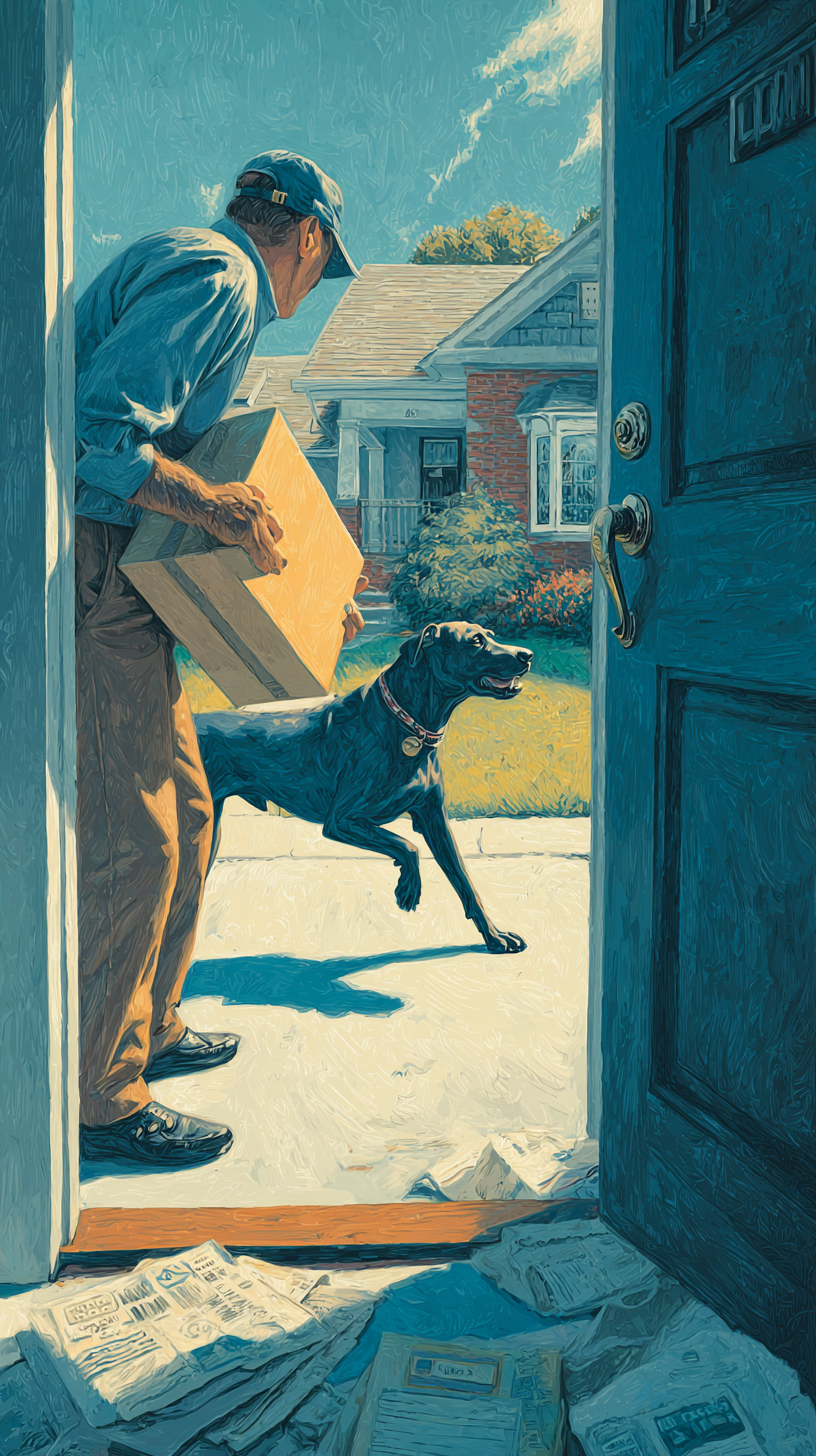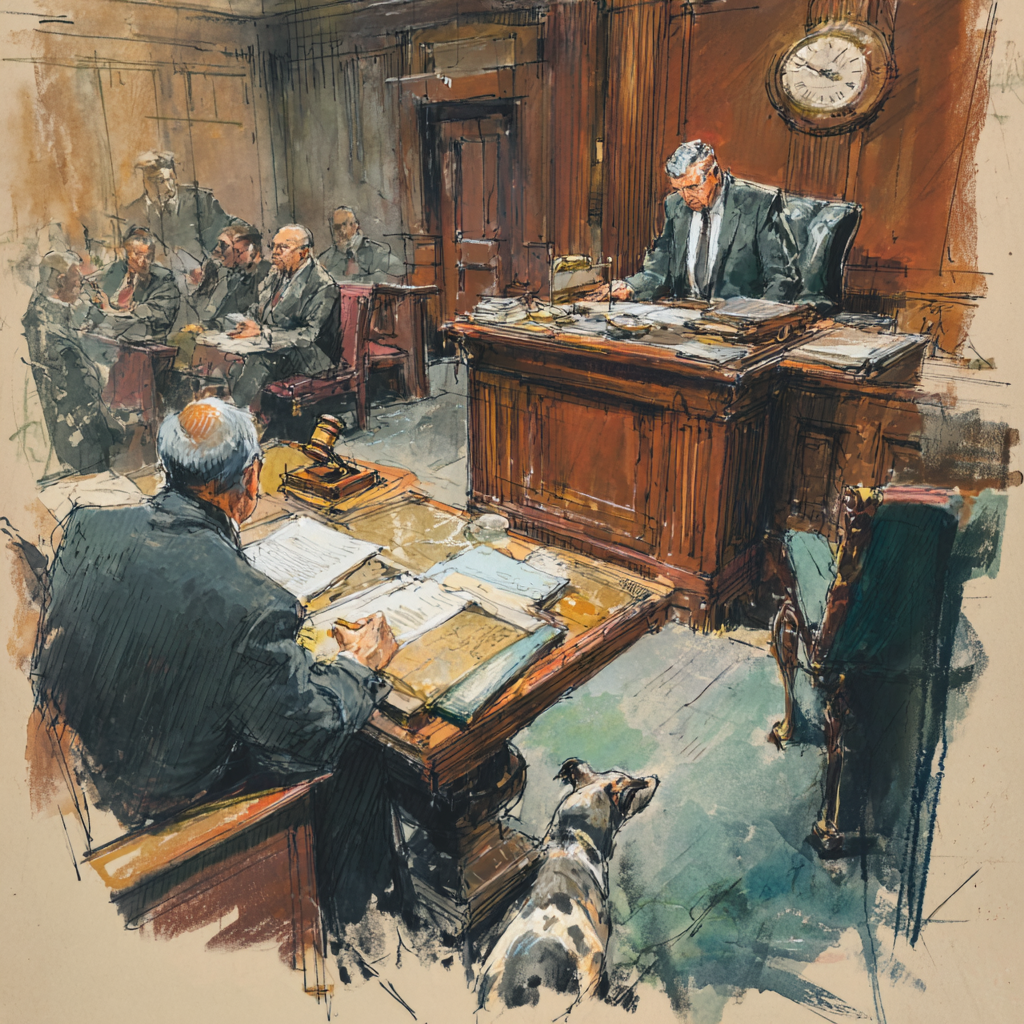
Picture a delivery driver navigating Long Island’s suburban streets in Nassau or Suffolk County. A package sits ready for drop-off when a loose dog darts out from a yard. Incidents like this happen far more often than people think. The New York State Department of Health logs thousands of dog bites annually. Many strike workers on the clock—postal carriers, utility repair folks, and home service pros who enter private properties as part of their routines. These bites go beyond simple mishaps. They pose genuine threats in jobs that send employees right to people’s doorsteps.
Long Island mixes dense neighborhoods with sprawling suburbs, which amps up the risks. Delivery drivers face dog attacks head-on, and postal workers dodge bites while dropping off mail—it’s part of the daily grind. An injury hits, and workers can seek workers’ compensation for on-the-job coverage or pursue the dog owner for liability. Understanding the differences shapes recovery outcomes. This holds true on Long Island, where homes double as offices and blur lines between work zones and private areas, creating specific legal twists.
Folks often wonder why some bites lead to quick payouts while others drag into court battles. Smart handling of these paths unlocks the answer.
Workers’ Compensation for Dog Bite Injuries
Workers’ compensation kicks in immediately if a dog bite strikes during work tasks. New York’s no-fault system covers employees bitten on the job. A technician fixes a home appliance, or a postal worker runs a route—the system applies. Employees skip proving employer fault. It handles medical expenses and replaces lost wages.
The system covers all medical costs, from emergency care to follow-ups for scars or infections. It pays about two-thirds of average weekly wages for time off, and permanent injuries can yield ongoing support. Drawbacks persist: no payments for pain and suffering, and benefits like temporary disability hit caps.
Employers stay protected in this setup. Workers can’t sue them for more, even if poor safety contributed. Claims process smoothly, but they often leave gaps. Injured workers feel shortchanged at times—and claims against others can bridge those shortfalls. The New York State Workers’ Compensation Board provides additional information on the claims process.
Short paragraphs emphasize key limits. They highlight how compensation falls short without overwhelming details.
Longer explanations reveal the system’s structure. Workers receive prompt aid, yet many pursue extra options for complete recovery. This approach fits Long Island’s workforce, where jobs expose people to residential hazards daily.
Pursuing Liability Against Dog Owners
New York holds dog owners strictly liable without needing proof of prior aggression, though records of past bites strengthen cases under the one-bite rule. A dog attacks someone lawfully on the property—like a delivery driver—and the owner could face responsibility.
These claims shine when the dog owner isn’t the employer, such as a homeowner whose pet lunges during a service visit. Property owners and renters add layers; a landlord who knows about a tenant’s dangerous dog might share blame. Damages surpass workers’ compensation: full wage replacement, compensation for pain and suffering from emotional scars or physical marks, extra medical bills, and potential penalties for clear negligence, like ignoring leash laws. Understanding premises liability is crucial in these cases.
Dogs behave unpredictably sometimes, but owners carry the burden. Homeowners’ insurance often steps in to cover settlements in these cases.
Varied situations demand attention. For example, a utility worker enters a fenced yard only to meet an unleashed dog. Evidence of ignored local rules bolsters the claim.
Merging Paths for Stronger Recovery: Maximizing Compensation
Long Island workers frequently claim workers’ compensation first and then target the dog owner with a liability suit. Laws permit this dual approach, but rules coordinate to avoid double-dipping—courts manage fairness.
Workers’ compensation liens attach to liability wins, letting employers or insurers reclaim their costs. Sharp negotiations often reduce these liens and boost net recovery. Workers file compensation claims fast for quick relief and build the injury case over time for bigger gains.
Rushing settlements harms outcomes. A low compensation agreement weakens leverage in liability talks. Careful steps matter.
Delivery drivers on Long Island sometimes ignore long-term bite effects, like nerve damage that reduces grip strength. Combining claims delivers financial support and secures future well-being.
This strategy works across professions. Home aides visiting clients encounter similar risks, and linking options protects them fully.
Critical Elements for Long Island Workers
Specific jobs amplify dangers here. Drivers in Huntington or Hempstead confront residential dogs daily. Utility crews access backyards in Levittown and meet unrestrained pets. Home health workers step into private homes and face parallel threats.
Municipal versus private property distinctions play roles. Nassau and Suffolk Counties apply leash laws and aggressive dog regulations, but enforcement varies by spot. Homeowners’ insurance usually covers private property bites, while public land cases limit paths.
Company policies affect results. Businesses train staff on dog avoidance or issue tools like pepper spray, influencing claim strength. An employer skimps on safety, and compensation still covers—but it highlights openings for liability.
Bites on lunch breaks spark debates, a frequent issue in Long Island work injury cases.
Short sections like this spotlight uncertainties. They draw attention to gray areas.
Deeper dives explore contexts. Workers in tight coastal spots near the Sound handle confined areas where dogs snap at intruders. Knowledge of area rules builds solid arguments.
Assembling Evidence: Collecting Proof and Documentation
Workers launch compensation claims for dog bites with solid evidence. They submit incident reports right away, gather witness accounts from neighbors or colleagues, and compile detailed medical records. Pay stubs verify earnings for precise benefit amounts.
Liability cases demand more: confirm dog ownership, retrieve bite records from animal control, and note property details like missing fences or signs. Photos of injuries and scenes, plus expert views on dog behavior, reinforce positions.
Challenges emerge—owners deny fault, insurers lowball offers, or disputes question work status. Fast moves preserve evidence before it fades. The Humane Society offers resources on responsible pet ownership.
Tiny slips undermine efforts, such as overlooking absent warning signs.
Diverse sentence openings maintain interest. Gathering proof transforms everyday actions into vital moves for victory.
Longer segments detail processes. Witnesses describe the attack sequence, medical notes track recovery, and photos capture immediate aftermath—all weaving a compelling narrative.
Protecting Rights After an On-the-Job Dog Bite
Long Island workers suffer a dog bite and should seek medical help immediately, then alert employers and authorities. They preserve evidence: snap photos, collect witness contacts, and jot down fresh recollections.
Specialists steer through compensation and liability routes for dog bites to lock in top benefits—sidestepping pitfalls like ignored liens or missed deadlines.
Ongoing efforts address persistent health needs, like therapy for attack trauma on a delivery shift, and push for workplace changes. Better company habits prevent future incidents.
Workers dealing with a Long Island job-related dog bite gain from attorneys at The Law Office of Jason Tenenbaum, P.C. These experts handle personal injury and employment issues. They understand compensation claims for dog bites and liability actions, helping secure fair payments. Reach them at 516-750-0595 for guidance—taking action begins there.










One Response
I am truly thankful to the owner of this web site who has shared this fantastic piece of writing at at this place.